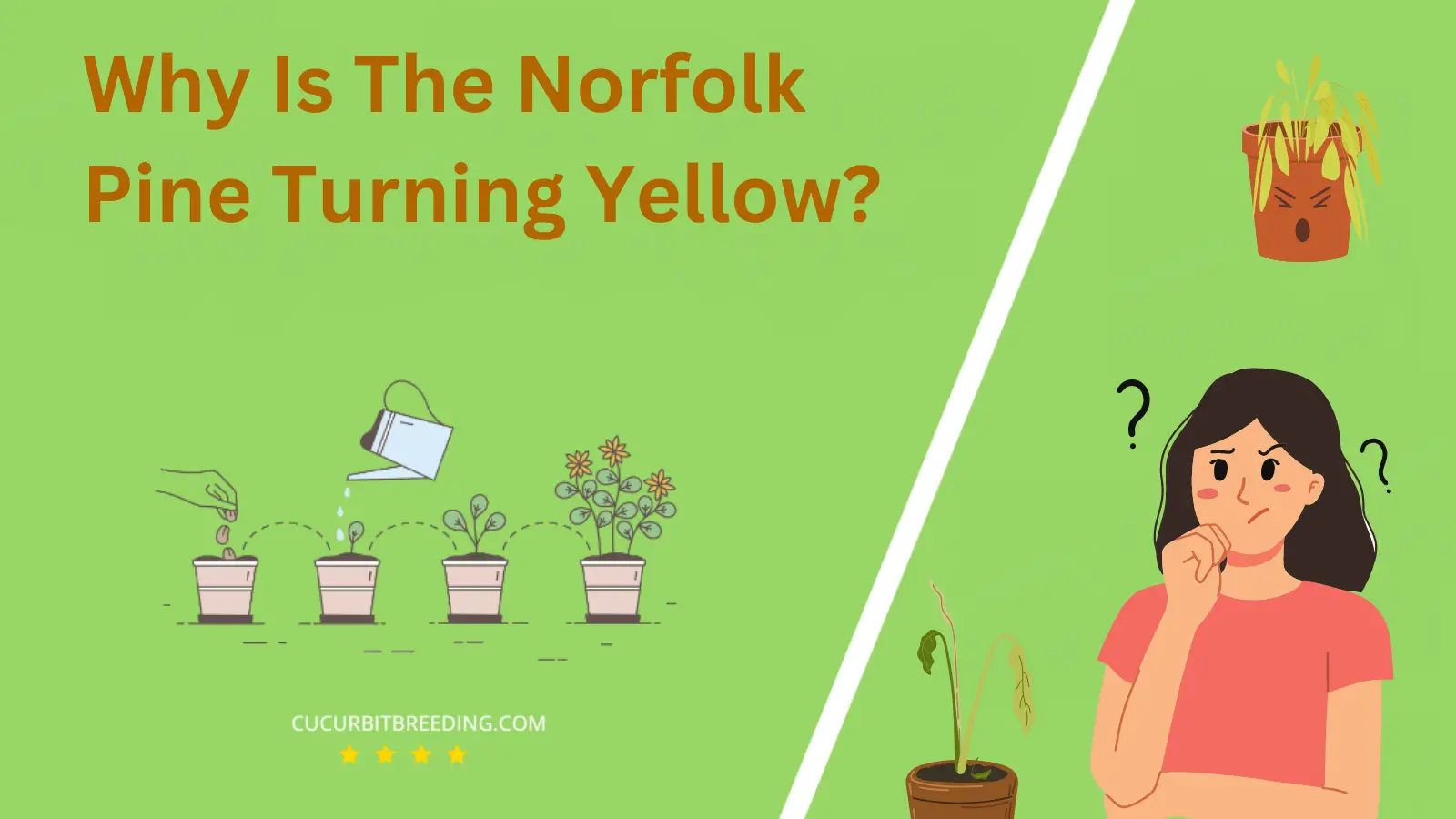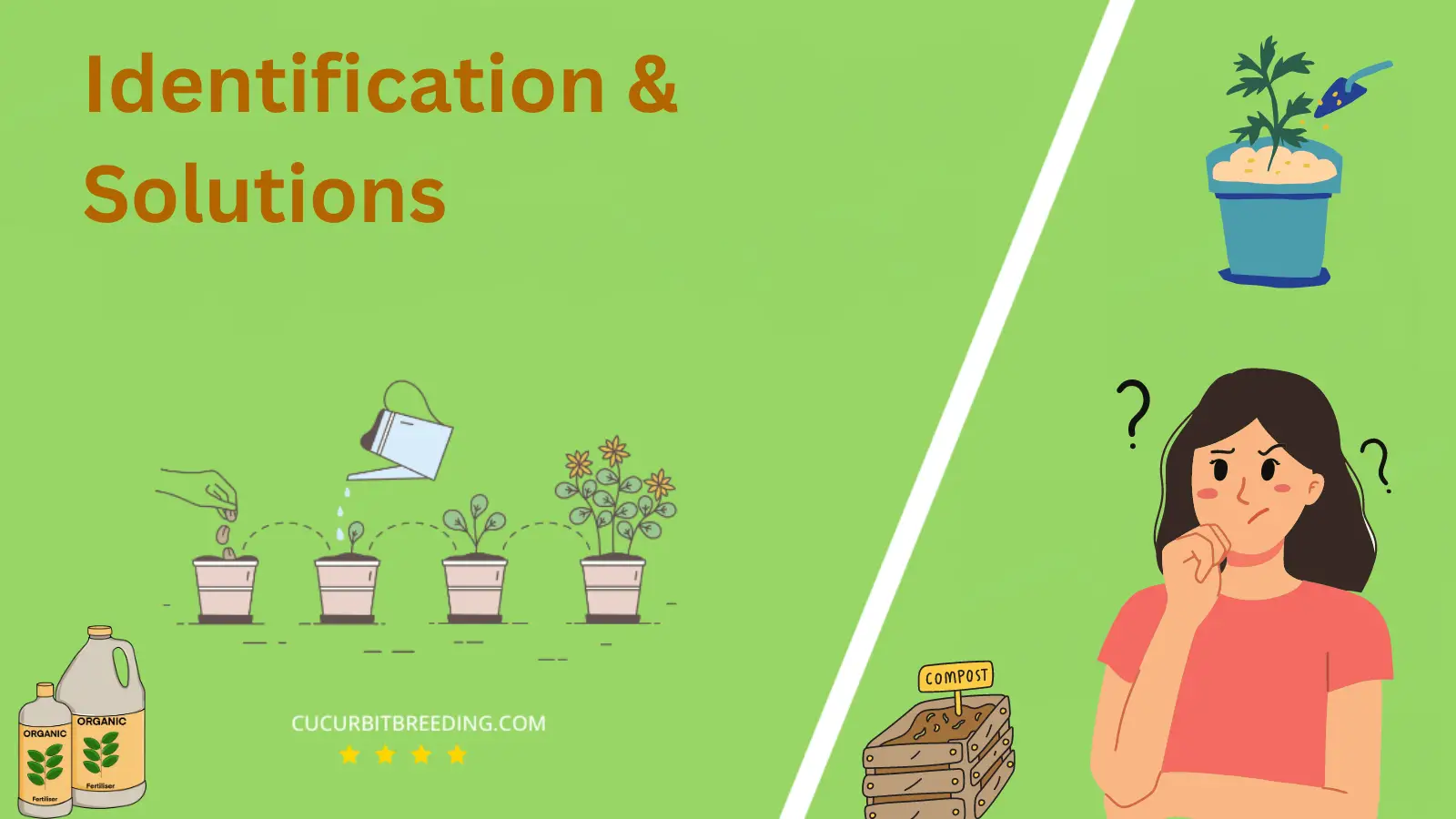
Observe the lush, green expanse of your garden and there it is – the majestic Norfolk Pine turning yellow. This unexpected transformation might make you question the vitality of your beloved tree.
Deceptively tricky to care for, determining what’s causing the yellowing of your Norfolk Pine can seem like a garden mystery waiting to be solved. Is it water, sunlight, temperature or something more sinister? Prepare to embark on a green-thumbed investigation!
Why Is The Norfolk Pine Turning Yellow?
1. Lack of sunlight
| Description | Insufficient sunlight causes the leaves to turn yellow in a Norfolk Pine. |
|---|---|
| Solution | Increase exposure to sunlight. |
A Norfolk pine turning yellow could be a sign of insufficient exposure to sunlight. Lack of sunlight limits a plant’s ability to produce chlorophyll, the green pigment that helps plants absorb sunlight and convert it to energy during the process of photosynthesis. If a Norfolk pine doesn’t get enough sunlight, it may start to lose its vibrant green color and turn yellow, signaling stress.
Solution: Moving your Norfolk pine to a location where it will receive adequate sunlight (partial to bright light) can help in restoring its health. However, remember that Norfolk pines do not tolerate direct intense afternoon sunlight which can scorch the leaves. Gradually change its position so it doesn’t get shocked with the sudden change in environment. Also, rotating your plant every few weeks can ensure all sides receive equal exposure to light. Regularly check your plant’s leaves. If they still turn yellow, consult with an agriculture extension service or a local nursery for advice tailored to your particular conditions.
2. Overwatering
| Description | Overwatering leads to yellowing of leaves due to reduced oxygen availability in the roots. |
|---|---|
| Solution | Reduce watering frequency and allow soil to dry out between waterings to prevent yellowing. |
The Norfolk pine turning yellow is primarily due to overwatering. Overwatering can cause yellowing as it creates an environment that encourages the growth of root-rotting fungi and bacteria. This, in turn, inhibits the roots from effectively absorbing necessary nutrients. Though Norfolk Pines love a moist environment, they don’t like to be soaked in water.
To fix this, you would need to change your watering habits. Proper watering techniques include allowing the top inch or two of the soil to dry out between watering. It is also crucial to ensure that the plant is in a well-draining pot to prevent water from sitting at the root level. If overwatering has been severe, you may need to repot the plant in fresh, well-draining soil. Remember, it’s always better to underwater than overwater. Regularly monitor the plant’s color after these adjustments, over time, the plant should regain its vibrant green color.
To prevent future overwatering, research more on the specific watering needs of the Norfolk Pine. Understanding the plant’s preferences such as water quantity and frequency can help immensely. Additionally, consider investing in a soil moisture meter that can accurately inform you when it’s time to water your plant. Such preventative measures can help keep your Norfolk Pine healthy and green.
3. Nutrient deficiency
| Description | The Norfolk pine turns yellow due to nutrient deficiency, impacting its physiological processes. |
|---|---|
| Solution | Provide the Norfolk pine with proper nutrients to address the yellowing. |
The Norfolk pine turning yellow can be a sign of nutrient deficiency.
Nutrient Deficiency is a usual problem where the plant isn’t receiving the proper amount or specific essential nutrients it requires to grow healthily. Nitrogen is a critical element for the chlorophyll molecule, which is responsible for the plant’s green color. When a Norfolk pine lacks nitrogen, it often results in yellowing foliage.
To address this issue, you would need to feed your Norfolk pine with a balanced, slow-release fertilizer that is high in nitrogen. Always follow the recommended dosage on the fertilizer package as too much may cause fertilizer burn. Water the tree thoroughly after fertilizing to help the nutrients seep into the soil for the roots to absorb.
Additionally, make sure your Norfolk pine is regularly watered and in a well-drained spot. Keep in mind that although Norfolk pines are relatively low maintenance, they still need certain care to remain healthy. Monitor your caring practice and adapt it according to the plant’s needs. With proper care and attention, the yellowing of your Norfolk pine should improve.
Remember to always check for other causes of yellowing such as overwatering, underwatering, disease, or pest attack, as nutrient deficiency is one of many potential reasons.
4. Pest infestation (e.g., spider mites)
| Description | The Norfolk pine turns yellow due to nutrient deficiency, impacting its physiological processes. |
|---|---|
| Solution | Provide the Norfolk pine with proper nutrients to address the yellowing. |
The pest infestation, particularly by spider mites, is a common reason for Norfolk pines to turn yellow. Spider mites are tiny arachnids that suck the sap out of the needles of your Norfolk pine, leading to the yellowing of the needles. This is because the needles lose their natural green chlorophyll, and cannot perform photosynthesis properly.
To rectify this issue, you should initially treat the plant with a natural insecticide. You can make this at home by mixing a small amount of dish soap in water and spraying it onto the affected area. In addition, prune the affected areas to prevent the spread of the mites to the rest of your plant. Regularly washing the needles or misting them with water can also help to keep the spider mites in check.
However, if the infestation is extensive, a commercially available miticide or insecticidal soap might be necessary. Always follow the manufacturer’s directions when using these products. For extreme cases, consider calling a professional to treat your Norfolk pine and your garden to remove all traces of the spider mites.

5. Improper pH level of soil
| Description | Provide the Norfolk pine with proper nutrients to address the yellowing. |
|---|---|
| Solution | Adjust soil pH to proper levels for Norfolk pine to prevent yellowing. |
The Norfolk Pine, or Araucaria heterophylla, is a tree that thrives in slightly acidic soil conditions (pH 6.1 to 6.5). When the pH level deviates from this range, it can bring about a condition known as chlorosis. The improper pH level of the soil can disrupt the plant’s ability to absorb the necessary nutrients, particularly iron and nitrogen. This lack of nutrient absorption manifests as a yellowing of the needle-like leaves.
To rectify this problem, perform a soil pH test to find the exact pH level. If the soils proves to be too acidic or alkaline for the plant’s liking, you will need to amend the soil to adjust its pH level. For excessively acidic soil, apply a thin layer of lime to help raise the pH. Conversely, if the soil is too alkaline, you can use sulphur or iron sulfate to lower the pH. As additional preventive measures, ensure your Norfolk pine is watered regularly with rainwater, which is naturally slightly acidic and can help maintain soil’s pH stability.
6. Temperature stress (too hot or too cold)
| Description | causes the chlorophyll in the leaf to break down, revealing the yellow pigments underneath. |
|---|---|
| Solution | Adjust temperature to optimal range for the plant’s growth. |
The Norfolk Pine turning yellow could be a response to temperature stress. Norfolk Pines are sensitive to temperature changes. If the conditions are either too hot or too cold, the tree might react adversely, causing its needles to yellow. This could signify that the tree is in distress and not receiving the proper care it requires to thrive.
One solution to this is to maintain a consistent temperature for your Norfolk Pine. They typically thrive in temperatures between 60 and 70 degrees Fahrenheit. It’s crucial to avoid placing your Norfolk Pine near heat vents, fireplaces, or drafty windows where the pine can suffer from temperature fluctuations.
Further, while these trees may be able to handle slightly lower or higher temperatures for short periods, prolonged exposure may cause damage, leading to discoloration or yellowing of the needles. Ensure a stable temperature environment for your Norfolk Pine to keep it green and healthy.
7. Root rot
| Description | causes reduced water uptake, leading to chlorophyll breakdown and yellowing of the leaf. |
|---|---|
| Solution | Improve drainage, reduce watering, and treat with a fungicide to control root rot. |
One possible reason for your Norfolk Pine turning yellow could be due to insufficient water. Norfolk Pines require a certain level of humidity and consistent watering to thrive. If the plant doesn’t receive enough water, it can cause the needles to dry out and turn yellow as the plant struggles to survive.
To solve this issue, you should ensure that your Norfolk Pine’s soil is consistently moist, but not waterlogged. You can stick your finger into the soil to check; if the top inch of soil feels dry, then it’s time to water your plant. However, be careful not to overwater as this can lead to root rot. Norfolk Pines also benefit from regular misting, which can help maintain the correct humidity levels.
Besides, move your plant to a location that’s out of direct sunlight, but still bright. Remember, Norfolk Pines need bright, indirect light to stay healthy. Proper watering and light conditions can significantly improve the overall health of your Norfolk Pine and prevent it from turning yellow.